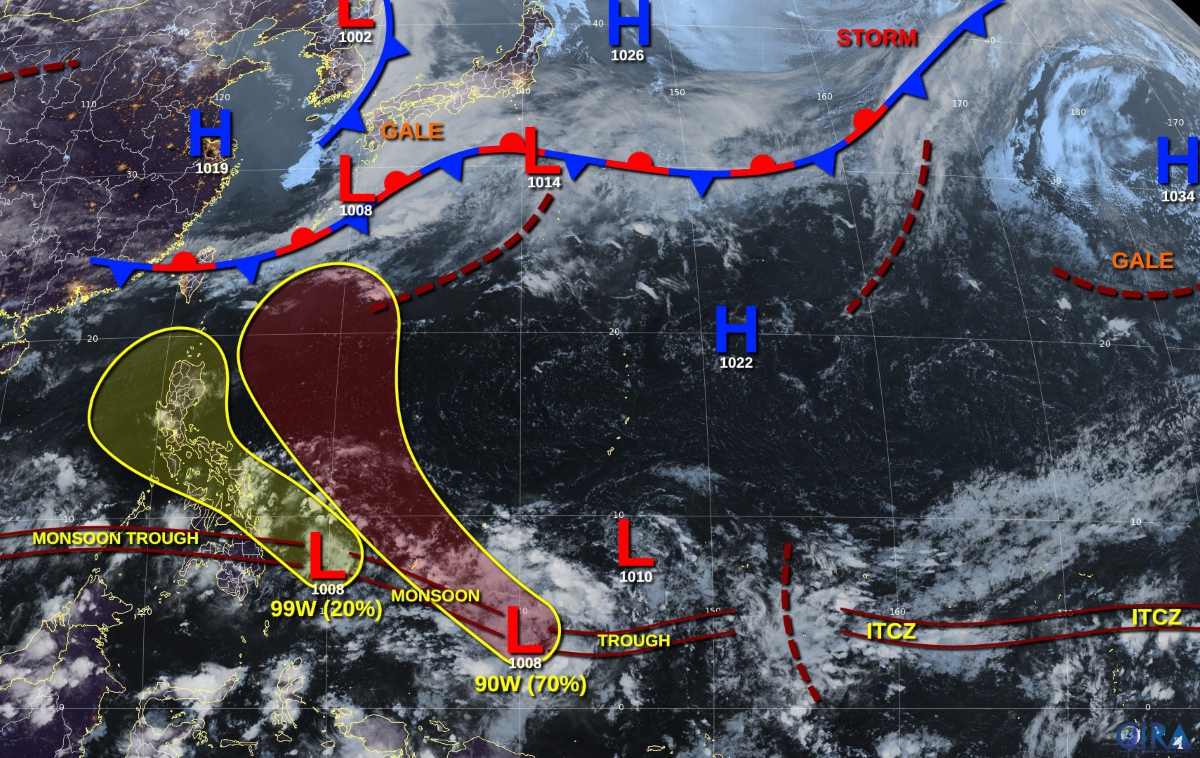At 3:00 a.m. on May 2, a new low pressure area named LPA 5a was located by the Philippine Atmospheric, Geophysical and Astronomical Services Administration (PAGASA) about 440 km east of Hinatuan, Surigao del Sur. The center of the low pressure is located at about 8.8 degrees north latitude, 130.3 degrees east longitude.
The depression is located along the tropical convergence zone - an area that is prone to rain - affecting Mindanao. Meanwhile, the southeast wind is dominating the weather in the rest of the country.
PAGASA's weather forecast says the low pressure near the South China Sea is likely to cause widespread rain in the Bicol, Visayas and Mindanao regions.
PAGASA also forecasts that the low pressure will bring showers to Central Visayas, Eastern Visayas, Northern Mindanao, Davao and Caraga regions. These rains can range from moderate to heavy, posing a potential risk of flooding and landslides.
The rest of Visayas and Mindanao will continue to be affected by the tropical convergence zone, causing scattered showers.
Meanwhile, Metro Manila and the rest of Luzon are expected to see little to no clouds, hot and hot weather. Under the influence of the winter wind, the possibility of local showers and thunderstorms during the day is quite high.
According to PAGASA's latest storm forecast, the possibility of the low pressure developing into a storm in the next 24 hours is low. However, the low pressure tends to move closer to the mainland and may cross the Visayas region to move west of Palawan in the coming days.
Although the depression is active, PAGASA has not issued a strong wind warning over the Philippine waters. The overall sea waves are forecast to be mild to moderate, with waves ranging from 0.6 to 1.8 meters high.
Meanwhile, the US Joint Typhoon Warning Center (JTWC) named the low pressure area near the East Sea as 90W. The JTWC forecasts that the low pressure may strengthen into a tropical depression by the end of this week.

With a pressure of 1008 hPa, the low pressure is creating scattered convective clouds. The low pressure's circulation is gradually becoming more apparent. With favorable upper-level wind conditions, the high pressure is likely to develop into a tropical depression as it moves northwest, entering the central Philippine Sea.
The JTWC assessed the possibility of the low pressure strengthening into a storm in the next 7 days at a high level, up to 70%.
Previously, the latest typhoon news on May 1 from PAGASA said that there are forecasts of 1 to 2 typhoons forming in the Philippine Forecast Area (PAR) in May.











